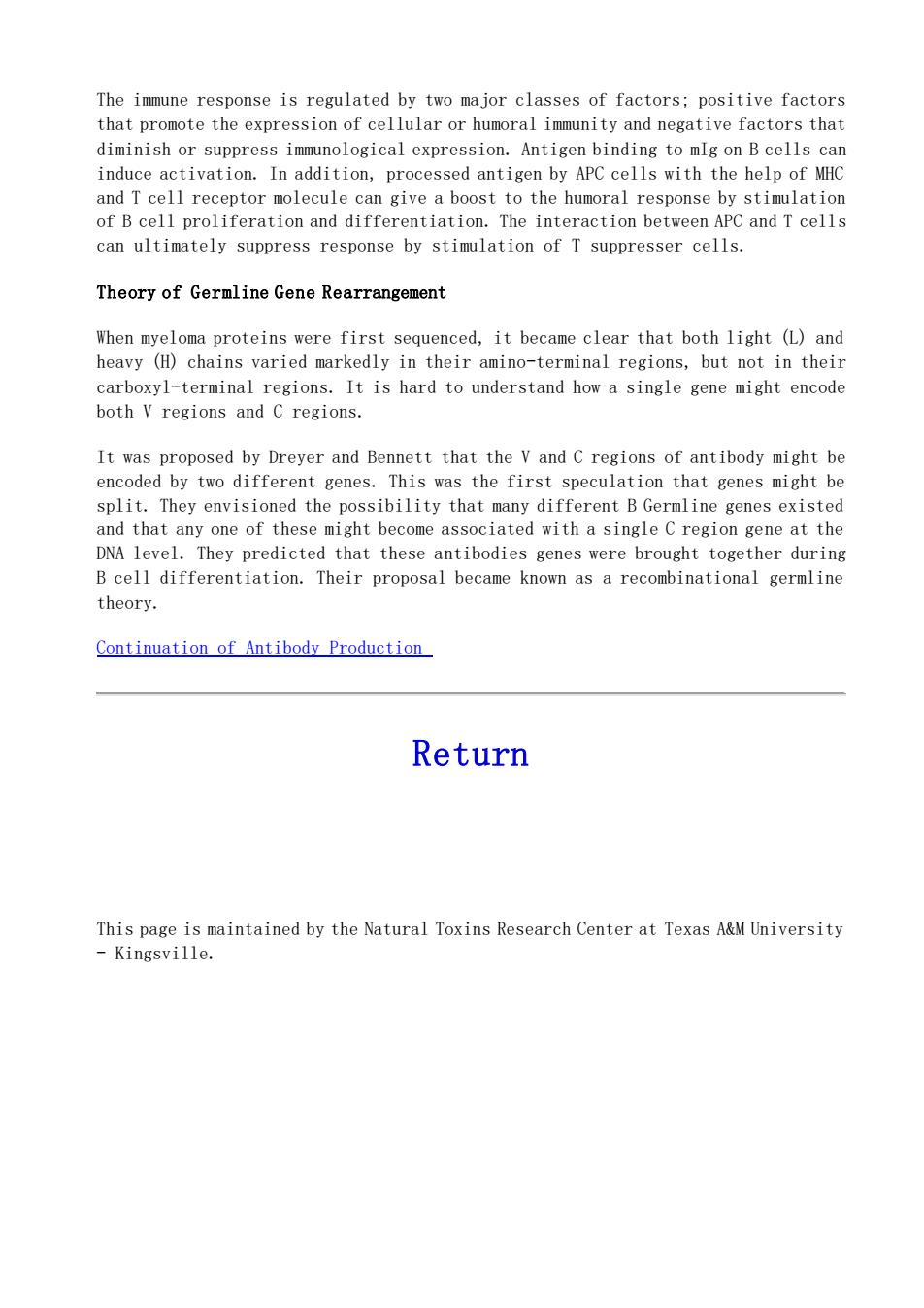正在加载图片...

The immune response is regulated by two major classes of factors:positive factors that promote the expression of cellular or humoral immunity and negative factors that diminish or suppress immunological expression.Antigen binding to mIg on B cells can induce activation.In addition,processed antigen by APC cells with the help of MH and T cell receptor molecule can give a boost to the humoral response by stimulation of B cell proliferation and differentiation.The interaction between APC and T cells can ultimately suppress response by stimulation of T suppresser cells. Theory of Germline Gene Rearrangement When myeloma proteins were first sequenced,it became clear that both light (L)and heavy (H)chains varied markedly in their amino-terminal regions,but not in thei carboxyl-terminal regions.It is hard to understand how a single gene might encode both V regions and C regions. It was proposed by Dreyer and Bennett that the V and C regions of antibody might be encoded by two different genes.This was the first speculation that genes might be split They envisioned the ssibility that many different BGe au1 1e auag UoIgaI alSuIs e U3IM paneroosse amo2aq 14ar asaq 30uds ermline DNA level.They predicted that these antibodies genes were brought together during B cell differentiation.Their proposal became known as a recombinational germline theory. Continuation of Antibody Production Return This page is maintained by the Natural Toxins Research Center at Texas A&M University Kingsville. The immune response is regulated by two major classes of factors; positive factors that promote the expression of cellular or humoral immunity and negative factors that diminish or suppress immunological expression. Antigen binding to mIg on B cells can induce activation. In addition, processed antigen by APC cells with the help of MHC and T cell receptor molecule can give a boost to the humoral response by stimulation of B cell proliferation and differentiation. The interaction between APC and T cells can ultimately suppress response by stimulation of T suppresser cells. Theory of Germline Gene Rearrangement When myeloma proteins were first sequenced, it became clear that both light (L) and heavy (H) chains varied markedly in their amino-terminal regions, but not in their carboxyl-terminal regions. It is hard to understand how a single gene might encode both V regions and C regions. It was proposed by Dreyer and Bennett that the V and C regions of antibody might be encoded by two different genes. This was the first speculation that genes might be split. They envisioned the possibility that many different B Germline genes existed and that any one of these might become associated with a single C region gene at the DNA level. They predicted that these antibodies genes were brought together during B cell differentiation. Their proposal became known as a recombinational germline theory. Continuation of Antibody Production Return This page is maintained by the Natural Toxins Research Center at Texas A&M University - Kingsville